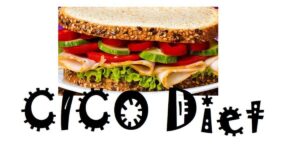What is nordic diet?
The Nordic diet is a diet designed by experts because it inspired the diet of northern Europeans (Norway, Denmark, Sweden, Finland, and Iceland) who eat a lot of fish.
Similar to the Mediterranean diet, this diet requires you to eat more whole foods rich in complex carbohydrates, proteins, and healthy fats.
You are also encouraged to eat berries, vegetables, and low-fat dairy products.
Because the diet is low in sugar and fat while prioritizing plant foods, the Nordic diet makes your fiber intake increase to double.
That is why the Nordic diet is a favorite of many people to lose weight and maintain health.
Basic Nordic Diet Principles
The most important principle of the Nordic diet is to eat as natural as possible. Emphasis is placed on seasonal vegetables, whole grains, and berries. And, one should cook at home with regard to the ingredients and use some seasoning. This will prevent the loss of nutrients by reducing food processing.
Eating less at once is also one of the keys that help in maintaining weight. In addition, the use of canola oil also prevents overeating which is one of the causes of obesity and acid reflux.
Nordic Diet Food List
If you want to go on a Nordic diet, you are advised to consume wheat, berries, fatty fish, nuts, seed vegetables, and cooking with canola oil.
Whole grains
One source of carbohydrates rich in fiber is whole wheat biscuits. These biscuits will be longer in the digestive process, compared to carbohydrates in fresh bread, pastry, and candy. In addition, whole grains also provide various vitamins, minerals, and antioxidants to protect the body’s cells.
Berries:
Berries are a feature in the Nordic diet. Eating a lot of berries, believed to be able to maintain an ideal body weight. In addition, berries have antioxidants called anthocyanins. These antioxidants are useful in maintaining healthy blood vessels and lowering blood pressure.
Tuberous Vegetables
Carrots, potatoes, and beets are the recommended vegetables in the Nordic diet. Vegetables are high in calories, but at the same time rich in health. So, the body takes longer to digest it, and keep blood sugar stable. The nutrients contained in vegetables are also able to protect the body’s cells, reduce cholesterol, and overcome infection.
Nuts
In addition to wheat, berries, and vegetables, you are also recommended to eat nuts. Because, nuts are a source of protein, and can replace the calories you usually get from red meat. Nuts are also rich in calcium, B6, iron, and riboflavin.
Grains
Like whole grains, berries, and vegetables, both nuts and seeds, like complex carbohydrates and fiber. You can find the benefits of zinc, potassium, and vitamin E, from whole grains.
Fatty Fish
There are several types of omega-3 fatty acids that cannot be produced by the body. You can get it from fatty fish such as sardines, salmon, tuna, and mackerel. These fatty acids can reduce the risk of heart disease, nourish blood vessels, and reduce fat in the blood.
Canola Oil
You may be familiar with olive oil commonly used in the Mediterranean diet. Well for the Nordic diet, you are advised to use canola oil. As with olive oil, canola oil is low in saturated fat. You can get the benefits of alpha linoleic acid and omega-3 in canola oil, which helps protect the brain, including preventing stroke.
Nordic Diet Benefits
According to various studies, the Nordic diet can lose weight and prevent diseases such as high blood pressure, high cholesterol, type 2 diabetes mellitus, and inflammation in the body.
This is due to the content of good cholesterol (unsaturated fatty acids) in various food menus that can maintain the health of the body.



